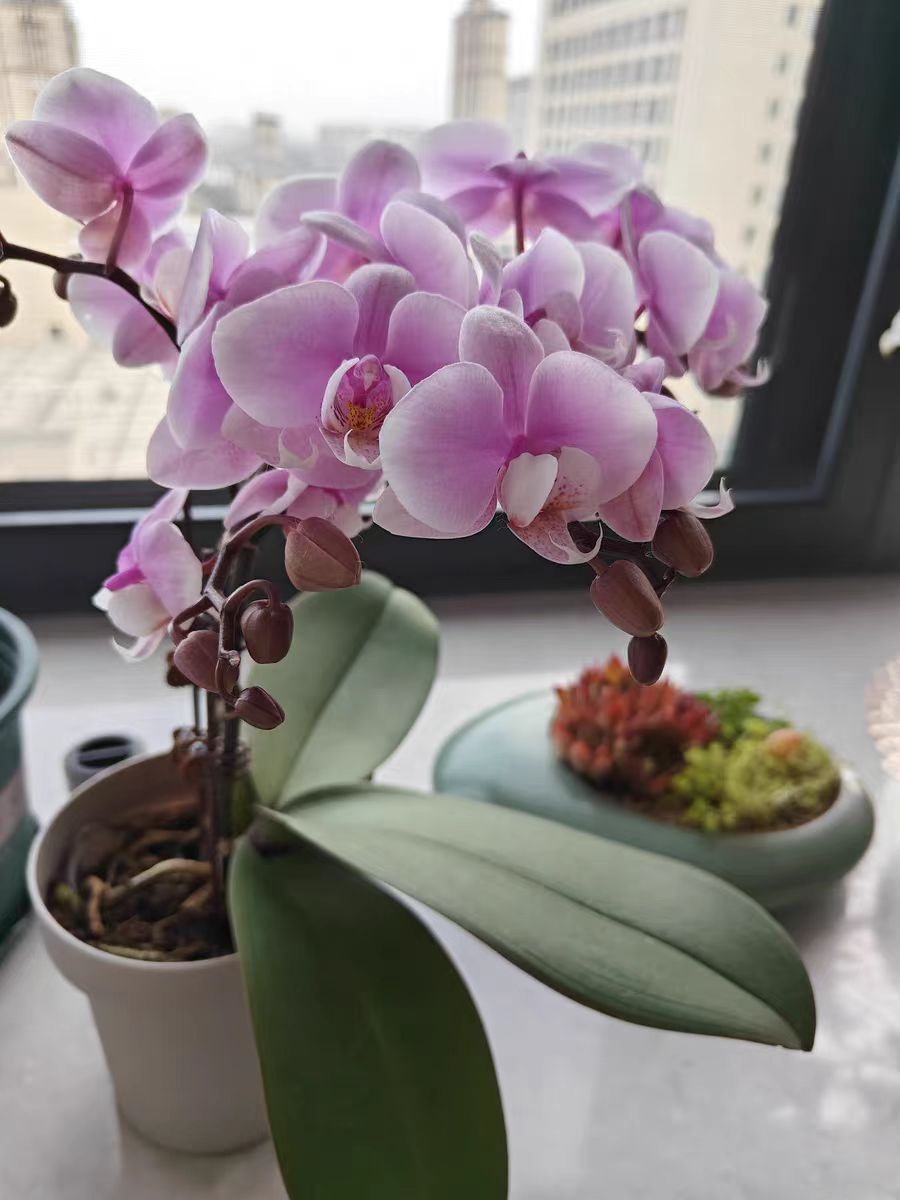As a much - loved ornamental flower, timely pruning of Phalaenopsis helps it maintain a good plant shape and promote the germination of new branches and flowering. However, improper disinfection and care after pruning can easily lead to bacterial infections, which may impede the growth of the plant or even cause its death. Understanding the correct disinfection methods and follow - up treatment measures is crucial to ensuring the healthy growth of Phalaenopsis.
Disinfection options for Phalaenopsis after pruning
Alcohol disinfection: Medical alcohol is a common and effective disinfectant. Applying 75% alcohol to pruning tools can quickly kill the bacteria carried by the tools and avoid cross - infection during pruning. After pruning, a small amount of alcohol can be dipped with a cotton swab and gently wiped on the wound of Phalaenopsis to achieve the purpose of disinfection by coagulating and denaturing the bacterial protein. However, it should be noted that alcohol is highly volatile, so the action should be fast when applying it to avoid excessive dehydration of the wound caused by multiple applications.
Carbendazim solution: Carbendazim is a broad - spectrum fungicide that can prevent and control diseases caused by various fungi. Carbendazim is diluted with water at a ratio of 1:1000 to make a solution. Then, a small brush can be used to dip the solution and evenly apply it on the wound to form a protective film on the wound surface and inhibit the growth of bacteria. The whole Phalaenopsis plant after pruning can also be soaked in the carbendazim solution for a few minutes for comprehensive disinfection.
Plant ash: Plant ash is a natural disinfectant rich in potassium. It can supplement nutrients to the plant while disinfecting. After pruning, dry and clean plant ash is directly applied to the wound. It can effectively absorb the juice exuded from the wound, accelerate the wound healing, and inhibit the growth of bacteria and fungi at the same time.
Treatment methods for Phalaenopsis after pruning
Wound protection: After disinfection, avoid getting the wound wet to prevent the re - invasion of bacteria. The Phalaenopsis can be placed in a well - ventilated and dry environment to let the wound air - dry naturally. If the environmental humidity is high, a thin layer of sulfur powder can be sprinkled on the wound to further isolate moisture and bacteria.
Adjustment of the maintenance environment: The Phalaenopsis after pruning is relatively fragile and needs a suitable maintenance environment. Place it in a position with sufficient scattered light, avoid direct strong light, and prevent the wound from accelerating water evaporation due to high temperature. Keep the environmental temperature at 18 - 28℃ and the air humidity at 60% - 80%. Good temperature and humidity conditions are conducive to the recovery and growth of the plant.
Water and fertilizer management: Within 1 - 2 weeks after pruning, reduce the frequency of watering and keep the substrate slightly wet. Over - watering can easily lead to wound rot. After the plant resumes growth, water it normally. In terms of fertilization, stop fertilizing temporarily after pruning to give the plant a buffer period. After it resumes growth, thin liquid fertilizer can be applied, following the principle of "applying thin fertilizer frequently" to provide the nutrients needed for the plant's growth.
Observation and rejuvenation: During daily maintenance, closely observe the condition of Phalaenopsis. If abnormal conditions such as blackening and rotting of the wound are found, it is necessary to disinfect it again in a timely manner. Over time, the plant will gradually germinate new buds and grow new leaves, which means that Phalaenopsis has successfully passed the recovery period. Subsequently, by managing it according to the normal maintenance method, it can bloom beautiful flowers again.
The disinfection and treatment of Phalaenopsis after pruning are important links in the maintenance process. By scientifically and reasonably selecting disinfectants, properly treating wounds and tools, and managing water, light, nutrients, and ventilation well after pruning, it is possible to help Phalaenopsis quickly regain its vitality and lay a solid foundation for its subsequent growth and flowering.
What should be used to disinfect Phalaenopsis after pruning?

Share with
Tagged in :



Leave a Reply